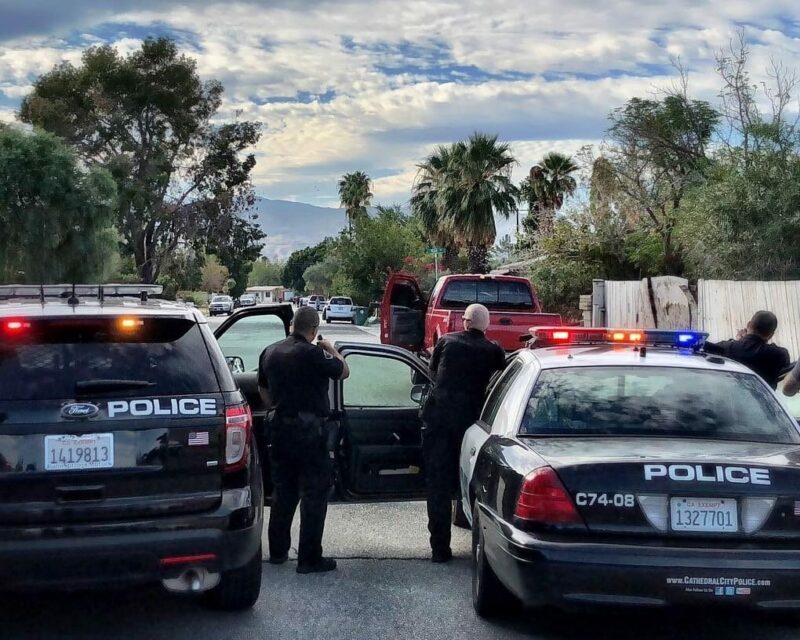It Comes as No Surprise Golden State is Best State for Police Officers in 2024
Knowing, meeting and working with law enforcement officials in Cathedral City, Palm Springs, Indio and Riverside County Sheriff’s deputies in contract cities, it seemed a given that California has been named Best State for Police Officers in 2024.
With National Police Week starting on May 12 and the median annual salary for a police officer reaching more than $69,000, WalletHub today released its report on the Best & Worst States to Be a Police Officer in 2024, as well as expert commentary.
WalletHub compared the 50 states and the District of Columbia across 30 key metrics. The data set ranges from the median income for law-enforcement officers to police deaths per 1,000 officers to state and local spending on police.
Life & Work for Cops in California (1=Best; 25=Avg.):
Overall Rank: 1st
- 8th – Median Income for Law-Enforcement Officers (Adjusted for Cost of Living)
- 19th – Median Income Growth for Law-Enforcement Officers
- 28th – % of Homicide Cases Solved
- 1st – State & Local Police-Protection Expenses per Capita
- 13th – Police Deaths per 1,000 Officers
Note: “Law-enforcement officers” includes police and sheriff’s patrol officers, detectives and criminal investigators.

Cassandra Happe
“Some states make protecting and serving the public in a law enforcement career more appealing than others,” according to Cassandra Happe, WalletHub analyst.
“The best states for police officers offer competitive compensation, supplemented by solid training that helps minimize the chances of deadly violence between officers and civilians. State-level policies like ‘red flag laws’ or ‘Blue Alerts’ also contribute to a better environment for police.”
California is the best state to be a police officer, and it has one of the highest per-capita spending on state and local police and public safety, she said. The average monthly starting salary of a police officer in California is a little over $5,500, the fourth-highest wage in the country. To top things off, California requires officers to take de-escalation training, which reduces the chances of fatalities for both officers and suspects, and it has ‘Blue Alerts’ which can help hasten the apprehension of suspects who injure or kill police officers.”
Expert Commentary
What is the long-term outlook for the law enforcement field?
“The law enforcement profession is facing a considerable amount of uncertainty about the future, which has caused many to have a dim outlook. However, there is reason to believe that current investments in critical issues like officer wellness, alternatives to conventional policing that ease the burden on officers themselves, and new strategies for improving legitimacy and community sentiment will pay off considerably. For sure, no one can tell the future, but there is reason to doubt the predictions of policing’s most ardent doomsayers.”
— Jorge X. Camacho – Policy Director and Clinical Lecturer in Law, Yale University
“I believe that the long-term outlook is optimistic as there is always going to be a need for police regardless of the political climate of particular areas. I think that professionalism has significantly increased throughout the years and will continue to increase as we move forward. The profession of policing is very honorable and one that is critical to the society that we have chosen to maintain.”
— David Hammel – Maryland State Police (Retired) Criminal Investigator; Professor, Anne Arundel Community College
Do you think police departments should invest more in technology and equipment or focus more on developing soft skills for use in community policing?
“While technology is always very important, especially predictive or preventative-based technology, agencies will never be able to keep up. Technology is always changing and improving and by the time departments purchase and install the latest and greatest technology, it is all but guaranteed that a good portion of the technology will be obsolete before its first use. Technology should not be abandoned but departments probably should be more discriminate about the choices they make. When it comes to deciding on which resources to invest in, the better option is probably the development of skills necessary for successful community policing efforts. Community policing should include a shift in the culture of the police department in its entirety and not rely on small units that are responsible for a department’s entire community policing efficacy. When utilizing a community policing culture, the soft skills of all the officers are paramount. Every community varies, and the communication, empathy, and problem-solving skills of each officer differ. Prioritizing the cultivation of these abilities to earn the appreciation and trust of the community is more beneficial for a department in the long term than solely focusing on investments in constantly evolving technology.”
— Dr. Amber L. Ciccanti – Division Chair-Liberal Arts; Assistant Professor, Rowan College at Burlington County
“Technology and soft skills are, ideally, two sides of the same coin, at least to the extent that they are (and should be) oriented toward the same goal: maximizing policing’s public safety impact while minimizing its unintended consequences. There is no golden rule for how investments in each should be balanced, but there should be a constant recognition that investments made by the police should always serve community interests and needs. It should also be noted that technological and equipment investments go beyond those made into the purchasing of more weapons or surveillance tools; they also include investments into better internal infrastructure (like record management systems, electronic memo books, and the like) that can improve data collection, analysis, performance evaluation, and transparency. As such, when we think of technology, we should not only think about the technology we fear, but also the technology we can leverage to achieve our ideal vision for legitimate, accountable, and effective policing.”
— Jorge X. Camacho – Policy Director and Clinical Lecturer in Law, Yale University
What strategies have proven effective in diversifying the police force so that it is more representative of the community?
“There are many strategies for diversifying a police force, but I believe the most effective approach is a strong commitment from police leadership. It cannot be a half-hearted approach to attract and recruit diverse candidates. It can be time-consuming, but rewarding. In addition, branching out from your individual community and recruiting on a larger scale can provide opportunities to attract great candidates for your department. Lastly, I would suggest that departments and agencies build relationships and search for candidates from minority police organizations or associations. A couple more well-known organizations are the International Association of Women Police, the National Organization of Black Law Enforcement, and the Hispanic Police Officers Association.”
— Jim Weber – Criminal Justice Instructor and Law Enforcement Academy Instructor, Mineral Area College
“Strategies that have shown to be effective in diversifying the police departments/forces include attending civic/community events especially those specifically aimed at minority populations, partnering with local organizations or educational institutions (i.e., high schools, colleges/universities), and advertising/marketing campaigns aimed toward social media outlets. Lastly, welcoming the community to participate in the process of building a more representative and inclusive police force that reflects the diversity of the communities they serve.”
— Gary Krulish – Chair, Justice Studies, Berkeley College
For the full report, please visit:
https://wallethub.com/edu/best-states-to-be-a-cop/34669
Image Sources
- Cassandra Happe: WalletHub
- Cathedral City Police: Cathedral City Police





![60 Years of Advancing Student Dreams [Sponsored]](https://ukenreport.com/wp-content/uploads/2024/05/C29_1U4A4681-440x264.jpg)

